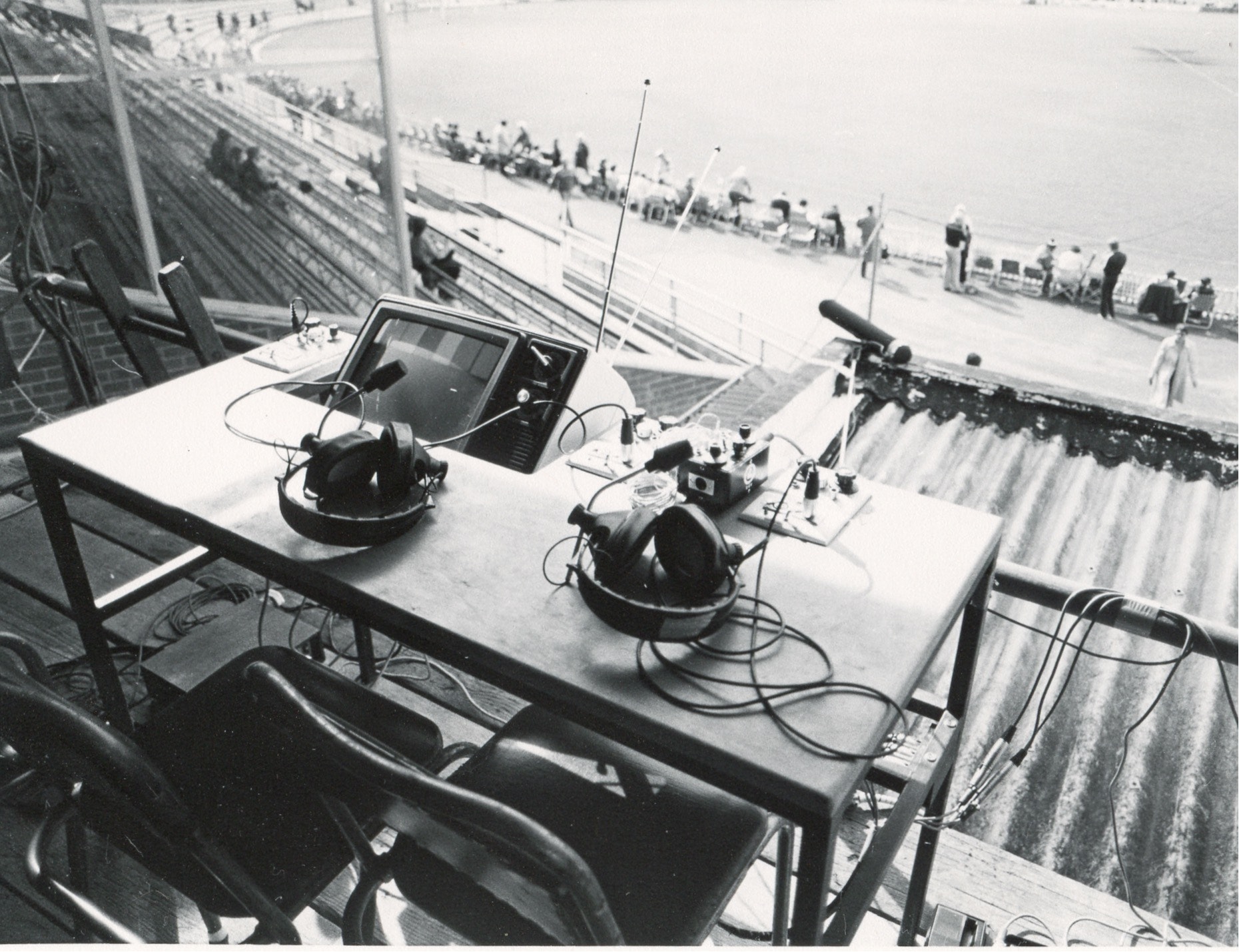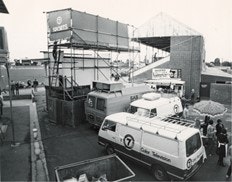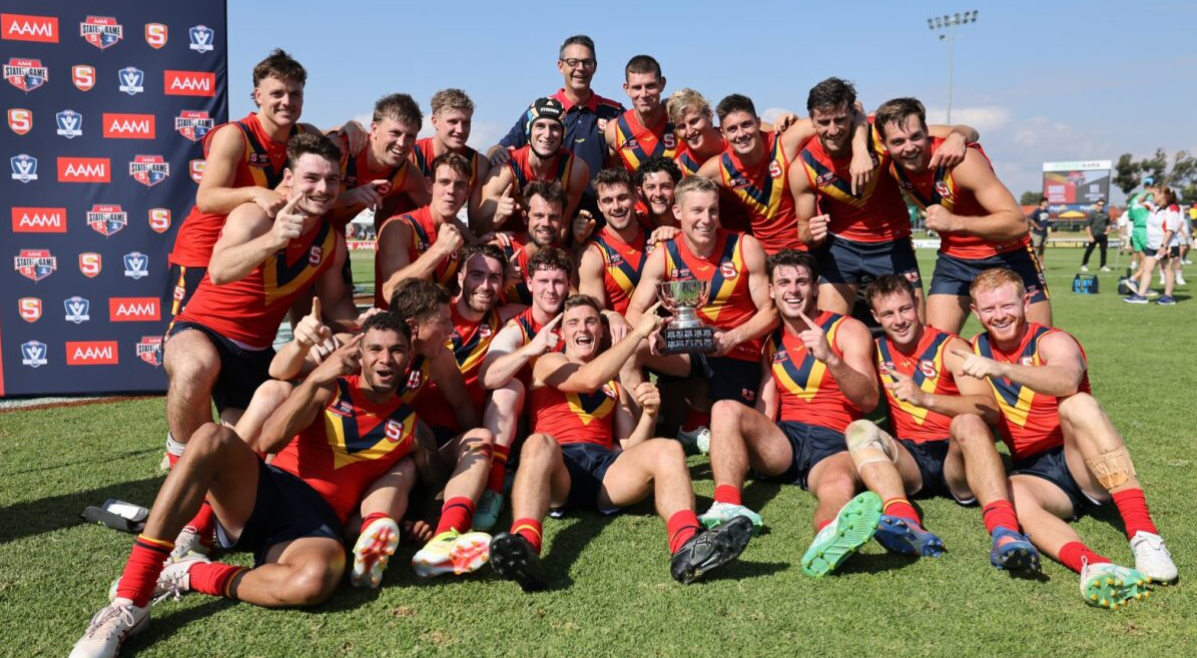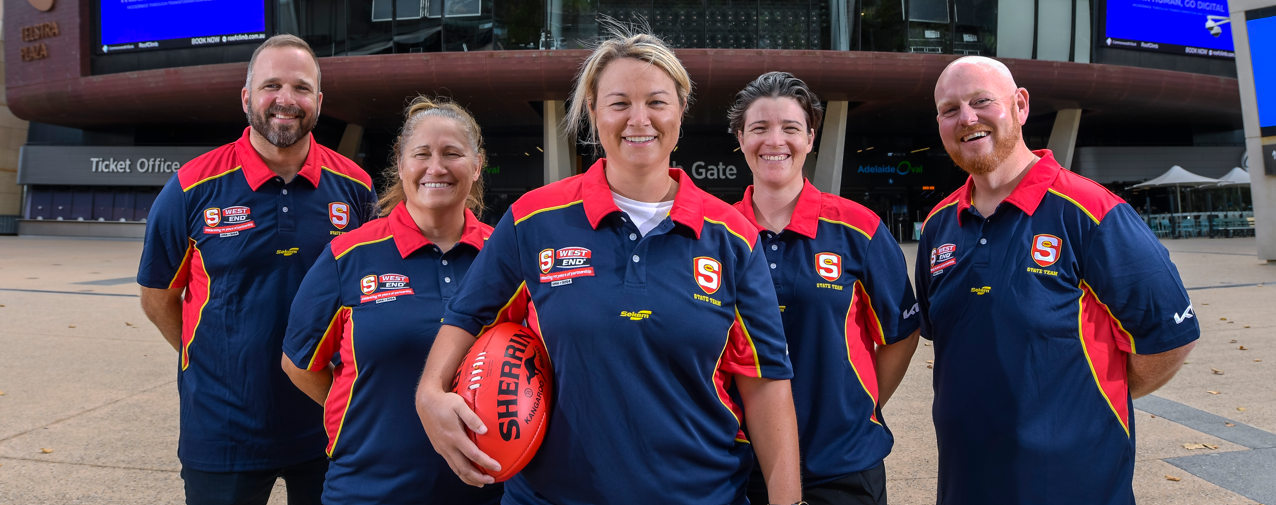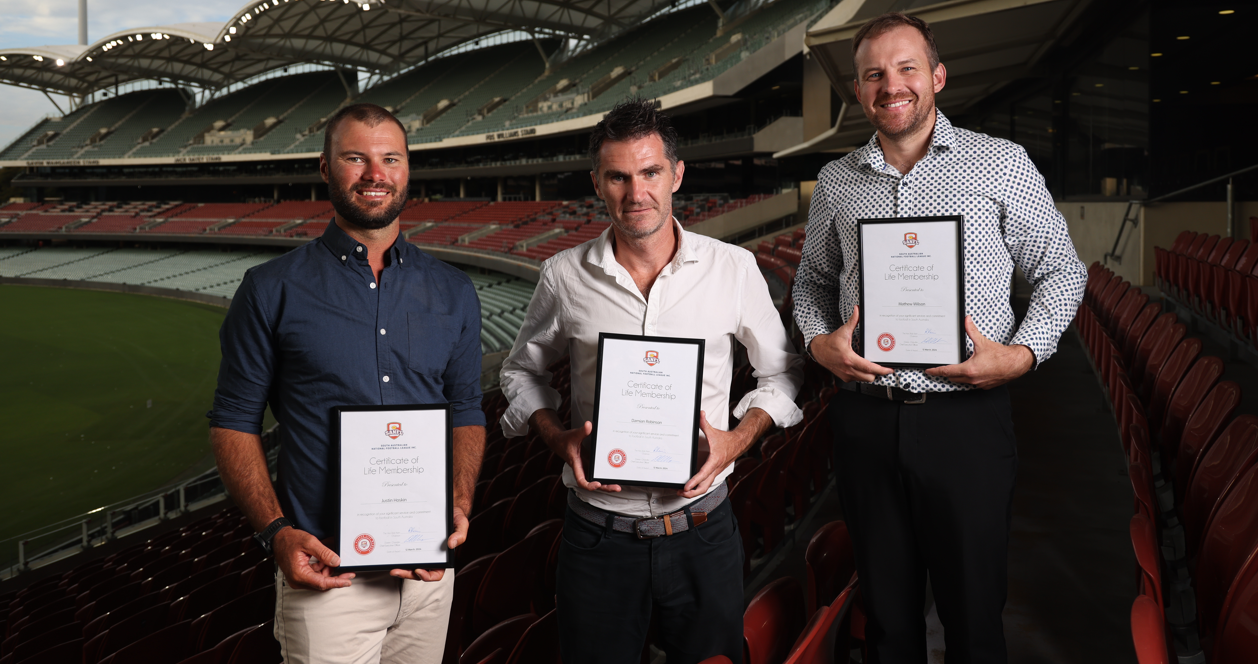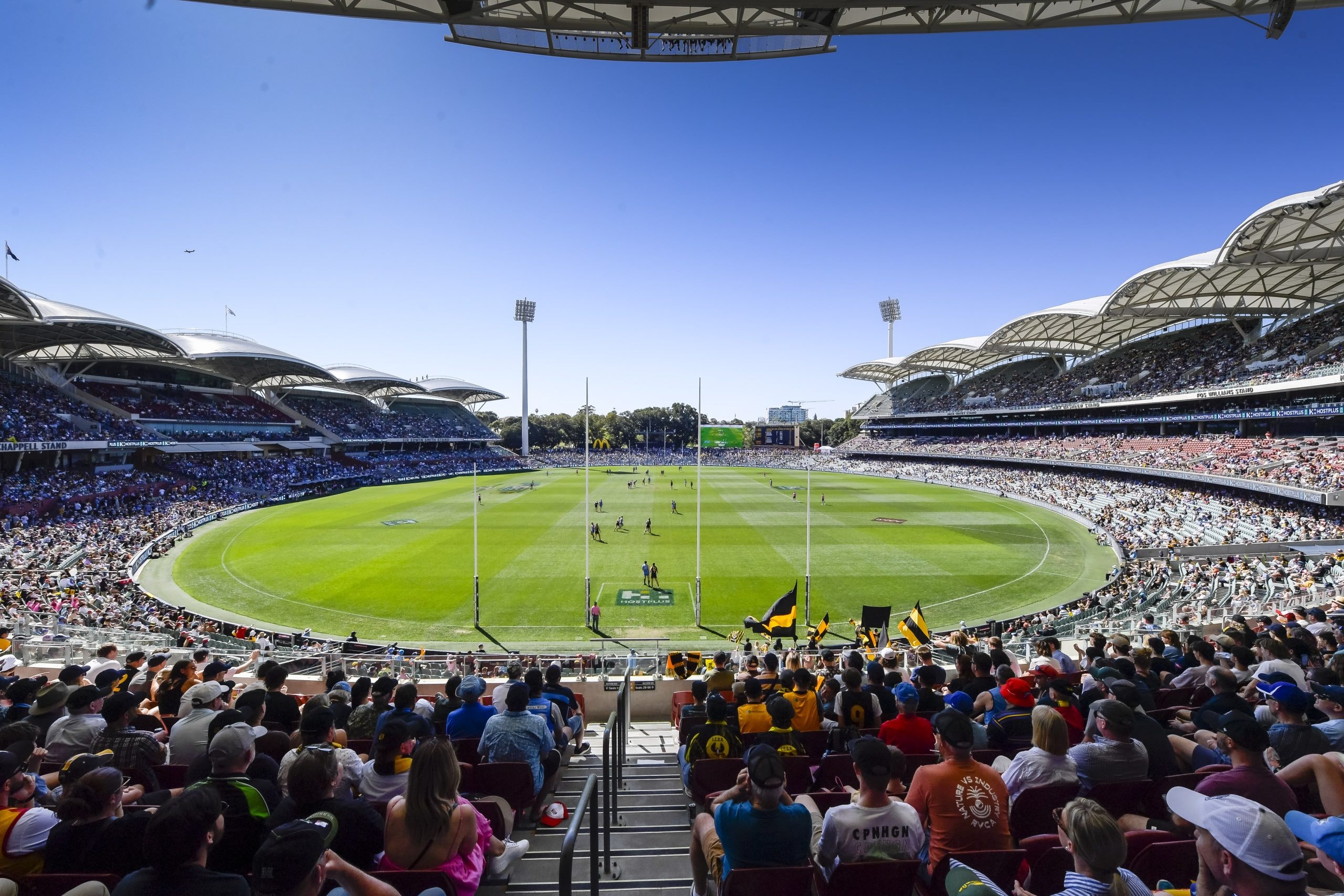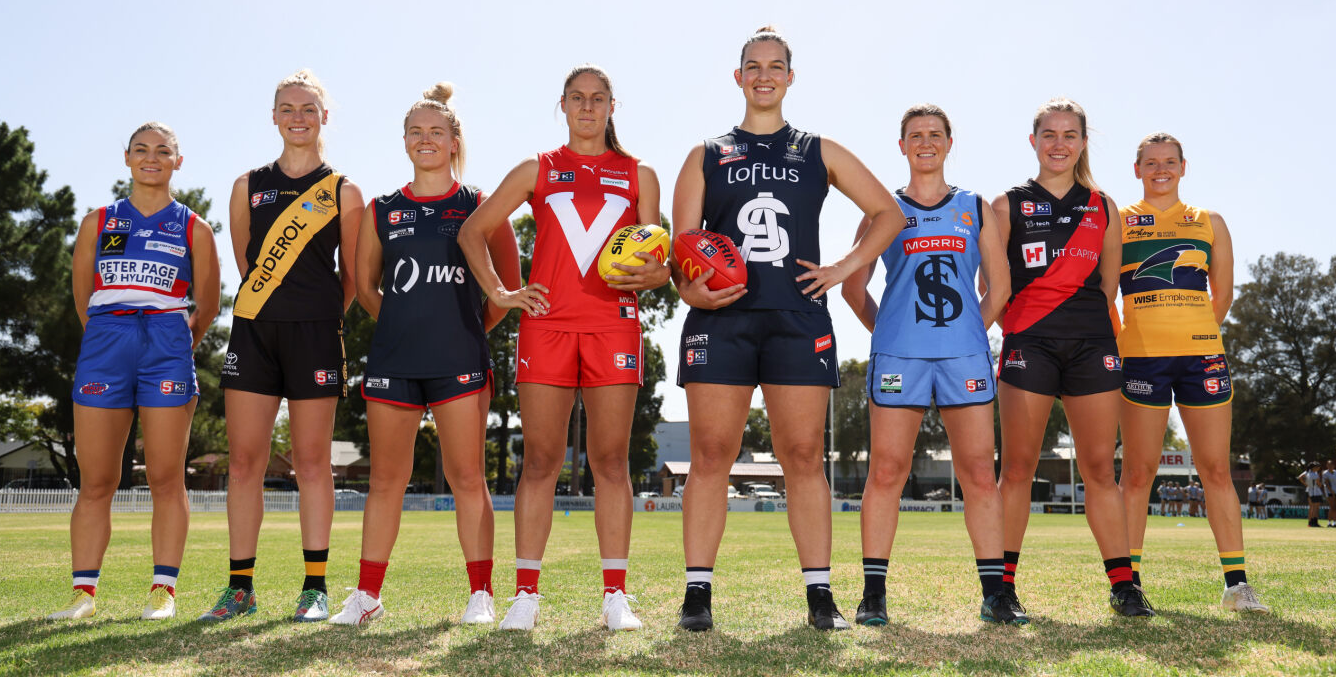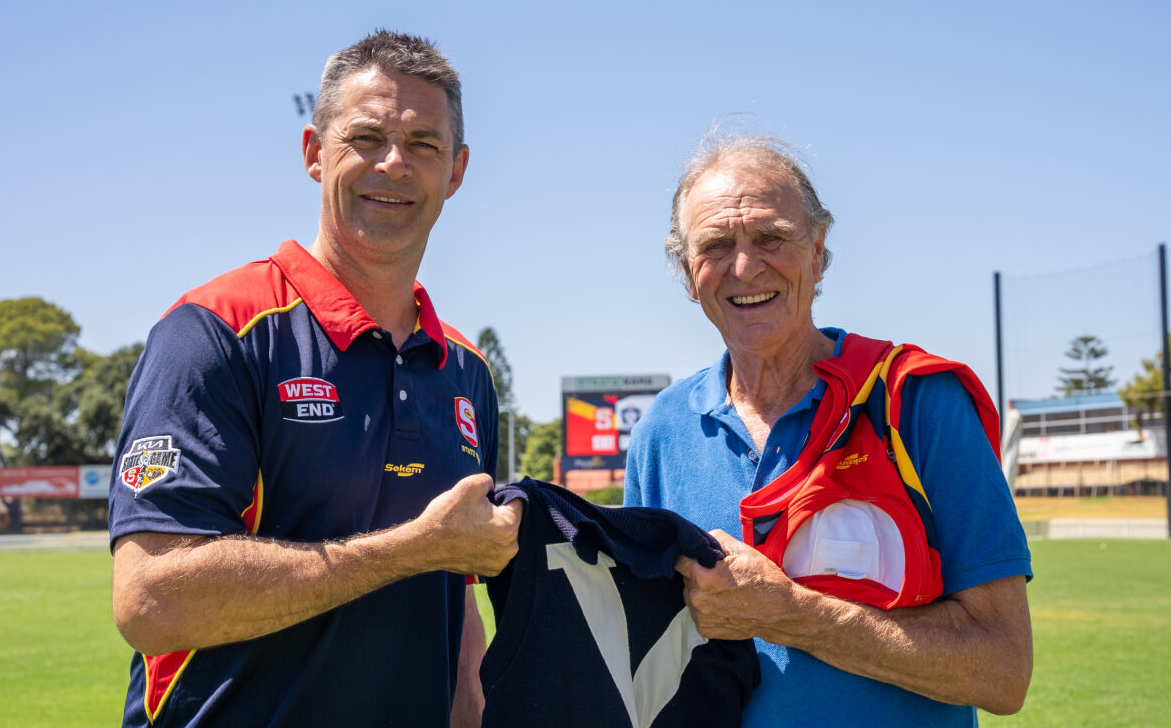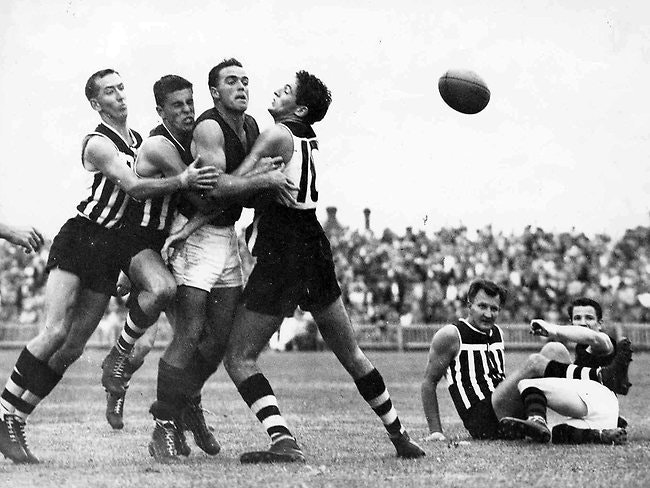
South Australian Football loses its King
NEIL KERLEY. February 20, 1934 – June 29, 2022.
South Australian football has lost its “King”. His mark on the game will long remain, along with the legend of Neil Kerley’s life in football and as a South Australian personality.
By Michelangelo Rucci
NEIL Kerley’s life could fill a book. Actually, two books as Kerley learned while penning his story as one of the greatest figures of South Australian football and society from the second half of the 20th century.
Donald Neil Kerley. Knuckles. The King. Kerls.
It is fair to say Kerley was the most dominating image of South Australian football – at home and across the nation – from the 1950s to the start of the AFL era in Adelaide when he was part of the launch of the Adelaide Football Club and later a boundary rider for Channel 7 on the national television broadcasts.
“He was aptly named ‘King Kerley’,” said Australian Football Hall of Fame legend Barrie Robran. “He was an enormous monolith in our game.”
Kerley died on Wednesday evening. He was 88.
SA Football Commission chairman Rob Kerin paid tribute to a life in football saying Kerley “was a tough but fun, larger-than-life character who became one of the best-known personalities of football and the SANFL.”
”Over many years, Neil made an outstanding contribution to South Australian footy, not only through his on-field presence and ability, but also his illustrious coaching career across five SANFL clubs, as well as at State level,” he said.
“We honour the life of Neil Kerley and his remarkable contribution to our game in South Australia as a legendary player, coach and administrator.”
State Premier Peter Malinauskas paid tribute to Kerley recognising a man who was the spirit of South Australia – and not just in football.
“South Australia has lost an icon. Australia has lost a football legend. He was a passionate and proud South Australian, the embodiment of State pride,” he said.
In an era of the showman in football, Kerley was South Australia’s equivalent to Victoria’s “Mr Football” Ted Whitten while the SA-Big V battles on and off the field defined Australian football more than any other rivalry.
“No,” says Robran seeking emphasis be placed on the original “Mr Football”, “lets get it right. Whitten was the equivalent of Kerley …”
Born in Bamera in the South Australian Riverland in 1934 to become a Norwood supporter, Kerley started his league football career as a teenager at West Adelaide in 1952. When he put away his coaching clipboard at the end of 1993, Kerley had left his mark on five SANFL league clubs as a player or coach – and all of South Australian football as a State player, coach, selector and self-appointed guardian of South Australia’s pride.
It is all quite fitting for a larger-than-life personality who in the early 1970s recorded a chart-hitting single, “I was Born Under a Wandering Star”.
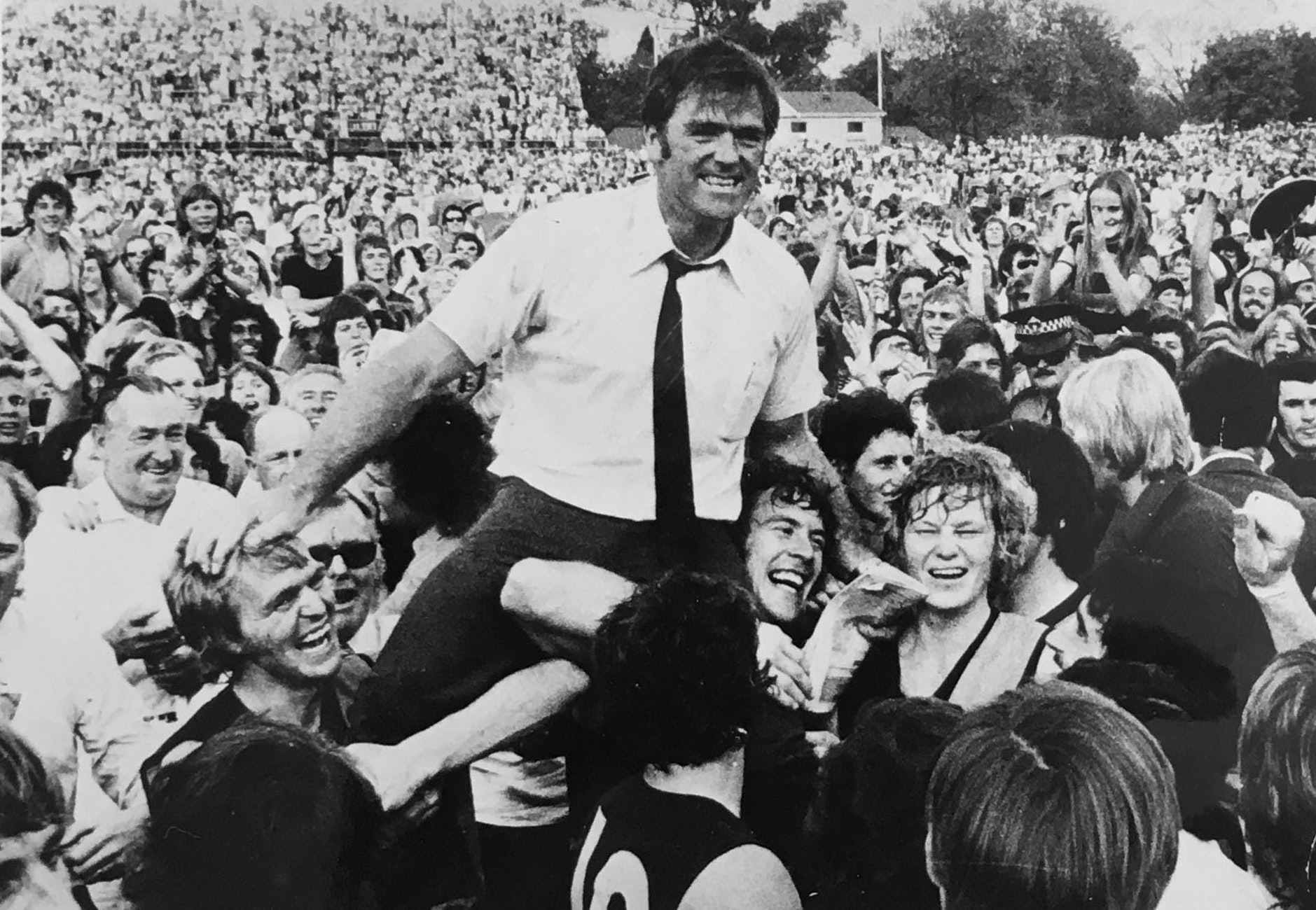
Neil Kerley is chaired off after Glenelg’s drought-breaking 1973 premiership at Adelaide Oval.
South Australia’s longest-serving SANFL league player, Glenelg ruck legend Peter Carey, argues Kerley deserves as much credit as fellow Hall of Famer Jack Oatey for changing the defensive ways of Australian football to emphasise skills and scoring.
“Neil sent out his teams to attack, attack, attack,” Carey said. “Every time we took the field for ‘Kerls’ the message was, ‘score more than the opposition’ rather than ‘restrict the opposition to less than you have scored’.”
Four SANFL league premierships. A member of the grand 1963 State team that famously beat the Big V on the MCG. The master coach who ended premiership droughts at West Adelaide, Glenelg and took South Adelaide from the wooden spoon to the flag in 1964. An enormous figure on the game – and in Adelaide, particularly when footballers became stars for the new medium of black-and-white television during the 1960s. Kerley was a must-see member of the football panel shows on Saturday evenings and Sunday lunchtimes during the football season.
Kerley was the 676th player to represent West Adelaide, making his league debut on September 6, 1952 – at Thebarton Oval in a loss to West Torrens. He finished his playing career at Glenelg in 1969 having represented three league clubs in 276 senior games.
Despite standing at 6 foot in the old measures (182 centimetres), Kerley rucked for West Adelaide giving up at least three inches to each of his SANFL rivals, but he was never conceding in spirit and endeavour.
“He was ‘Mr Big’,” said 1961 All-Australian Geoff Kingston, who at West Torrens knew Kerley as an opponent, as a State team-mate and as a media colleague, often ghost writing his newspaper columns.
“Neil played taller than he was. He stood taller among players who had more than him in height or talent. He was tough – and you did not need to see ‘Kerls’ to feel his presence. He was uncompromising. He squeezed everything out of his opportunity to be a winner.
“And those hands,” added Kingston referring to Kerley’s distorted fingers and protruding knuckles that became the legend of his toughness on the football field.
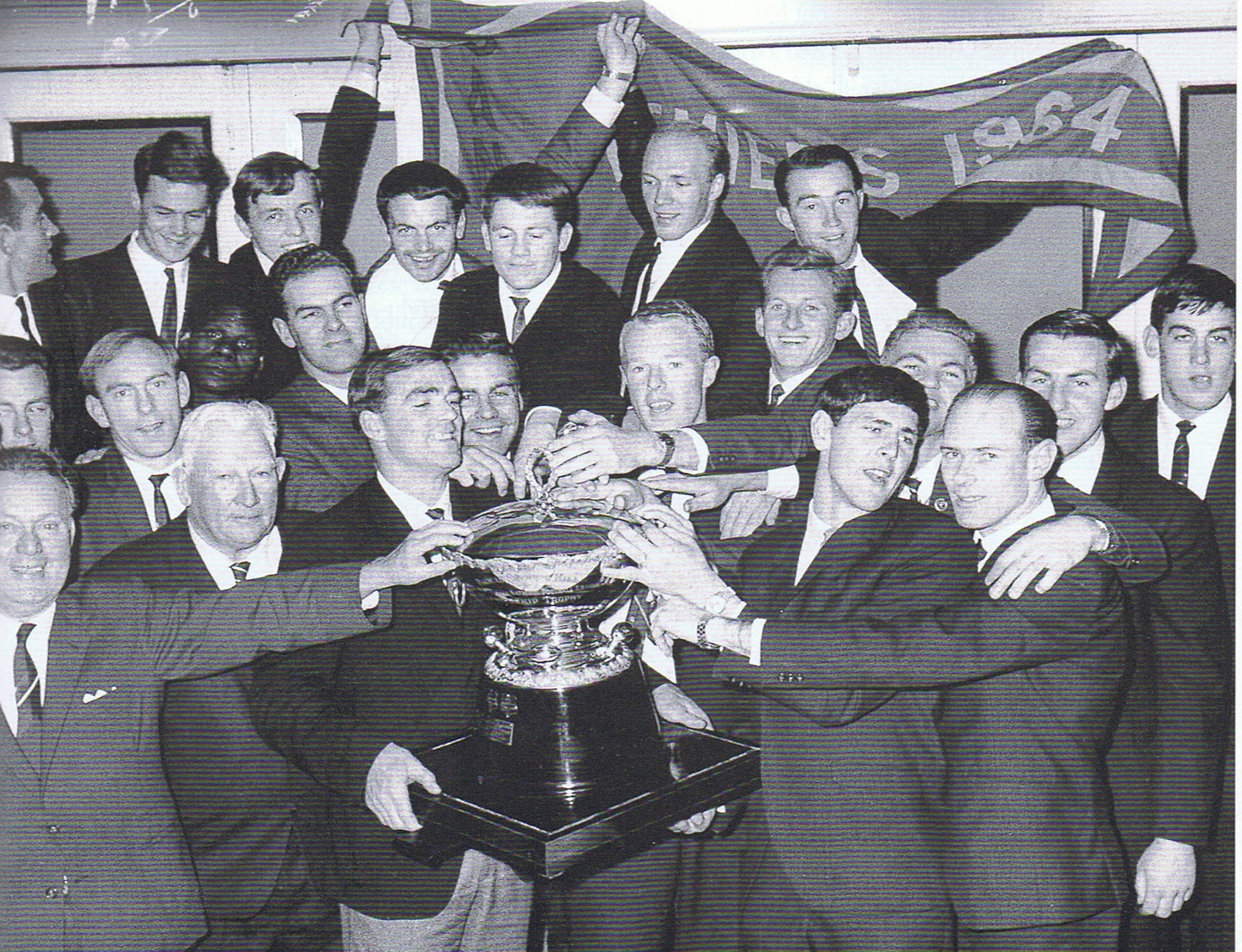
Neil Kerley, holding Seymour Hill Premiership Cup, celebrates South Adelaide’s 1964 premiership.
Kerley had three stints at West Adelaide across five decades – the first as a player and player-coach from 1952-1963, famously being sacked after leading West Adelaide to the premiership in the 1961 “Turkish bath” grand final and to the 1962 grand final loss to Port Adelaide at Adelaide Oval.
Kerley’s sacking provoked emotional scenes across the inner western suburbs – and front-page news stories (not unsual with Kerley) – while his devoted West Adelaide fans called extraordinary general meetings at the Thebarton Town Hall seeking to reverse the board’s decision.
Kerley left West Adelaide at the end of 1963 and the club remained in a premiership drought until “King Kerley” made his second coming to Richmond Oval in 1981.
John Kantilaftas, a member of the 1983 premiership side that ended a 22-year drought at West Adelaide, will never forget Kerley’s first day back at Richmond Oval in 1981, after an 18-year absence.
“It is as vivid as ever to me. ‘Kerls’ had called a team meeting for 2pm on a Sunday; he was standing outside the doors to the changerooms from 1.45 for 15 minutes, rocking backwards and forwards on his feet,” Kantilaftas said. “At 2pm, he told the door steward to lock the room – leaving the club president Bob Lee, the vice-captain and a few senior players outside.
“I’m sure they could hear him yelling from inside, ‘When I say 2pm, I mean 2pm’. The message was clear – Neil would not suffer fools. You did as Neil said – or you were gone.
“That day set the tone for how the club would operate with ‘Kerls’. Only special people can make that work at a football club. It was true to the legend that came with Neil.
“By 1983, we had come to know the man and his ways – how passionate he was about his football and how he loved and protected his players. You could not do anything but respect and admire Neil.”
One of the most striking photographic images in South Australian football is of Kerley being carried across Adelaide Oval after guiding Glenelg to its first flag in 39 years with the 1973 SANFL grand final triumph against North Adelaide. Dressed in a pristine white shirt that remained unstained on a hot September afternoon, Kerley is indeed the image of the “King” as he sits on a throne made up of admirers.
Peter Carey was the teenager key forward who kicked six goals for Glenelg in the seven-point win against the imposing North Adelaide side that had won the previous two SANFL premierships and the 1972 Champions of Australia title.
“I still remember that grand final to this day,” Carey said. “I was more worried about letting ‘Kerls’ down than worrying about the team or playing well. The esteem I had for Neil was enormous.
“I was so fortunate to have him as my coach. I loved playing for ‘Kerls’. But I am so disappointed that I never got to play alongside him. He was an incredible man. I was in awe of him as a youngster and I wanted to emulate him as a footballer. He was tough, uncompromising, he led by example – and he certainly was fun to be around. When ‘Kerls’ held court, there was no shortage of stories …”
Kerley won five best-and-fairest awards at his clubs – famously would correct anyone who declared a player “won” the Magarey Medal. “You are awarded the Magarey Medal,” insisted Kerley who was runner-up by one vote (15-16) to Central District hero Gary Window in the 1965 count.
Kerley missed out on premierships at just two of his five clubs – West Torrens and Central District. But his mark on those clubs was significant, giving greater credibility to their standing in the premiership race. It was the same authority Kerley delivered during the start-up of the Adelaide Football Club where he served as its first football manager across the heady summer of 1990-1991 and during the Crows’ inaugural AFL season in 1991. He also was an All-Australian selector.
“Neil change the culture at our football club,” said former Central District captain Roger Girdham. “And the league side improved by playing a better brand of football.
“What stays in my memory is how tough Neil was. As players we were always looking for the drink bottles after a major drill at training. When Neil was impatient for us to get back to training, he would say ‘I was lost in the bush in Darwin in heat and humidity for three days and three nights without water …'”
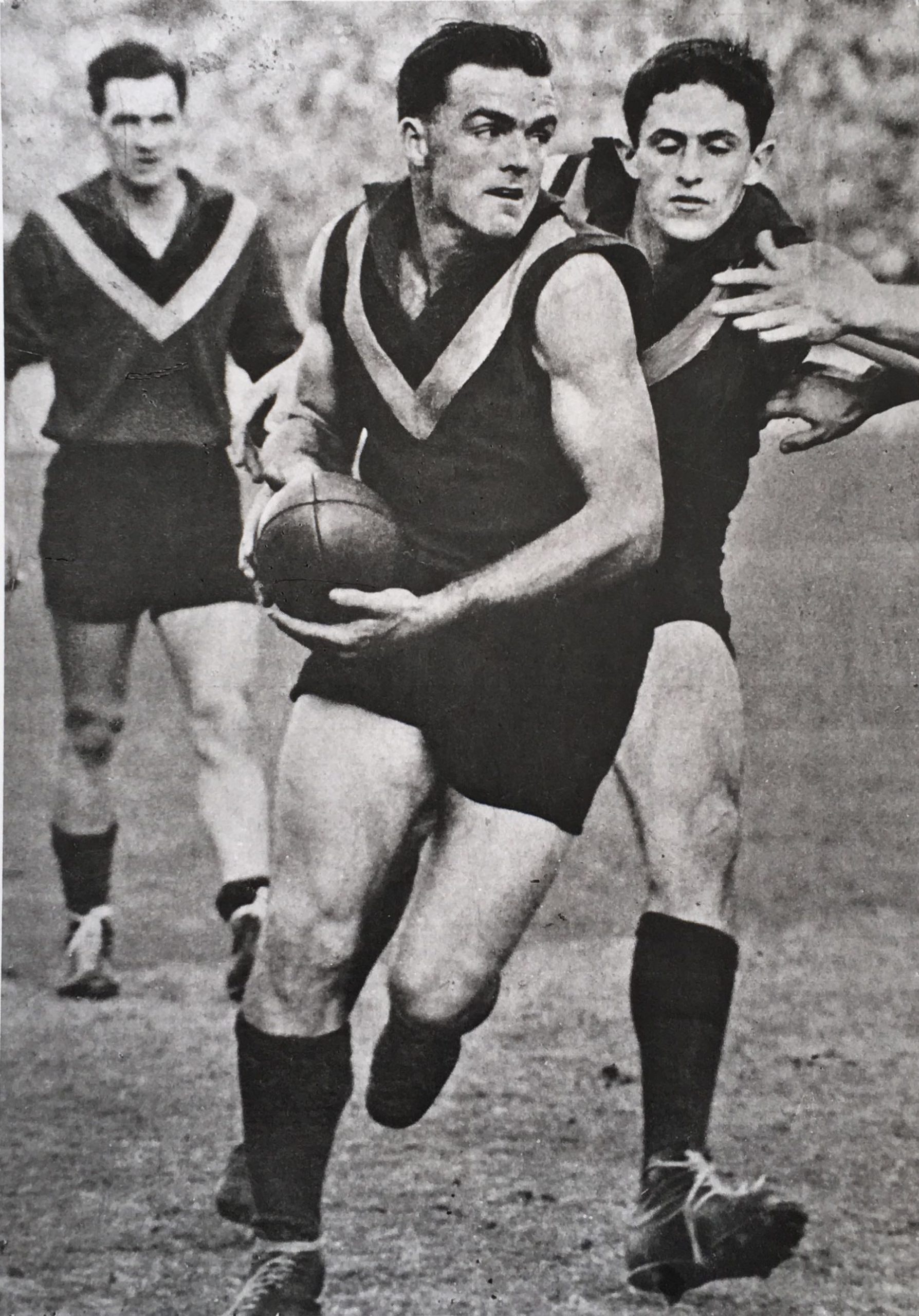
Neil Kerley in action for South Australia in 1961.
Outside the SANFL but on home soil, Kerley also made his name in the Iron Triangle leading the North Whyalla Magpies to premierships in 1954 and 1955 while away from West Adelaide.
Kerley’s reputation beyond South Australian borders was galvanised during his 32 appearances as a player in the red State jumper, then as a coach and later as the man in the media spotlight trading barbs with fellow national Hall of Famer Ted Whitten.
“Neil had an enormous presence in State football,” Carey said. “He loved beating the Vics. He lived for that challenge. That was the State game he wanted to win more than any other.”
Kingston recalls how Kerley was the team’s “protector” with a story from a State game against Victoria at Adelaide Oval in the 1960s.
“One of the Victorians was shaping up to clock one of Kerley’s West Adelaide team-mates, Paul Garnett,” said Kingston. “Seeing what was about to unfold in front of him, ‘Kerls’ just said in his deep voice, ‘Hey!’ The Victorian player put his hands down straight away.
“That was the respect ‘Kerls’ commanded from his team-mates – and the opposition. If you played alongside ‘Kerls’ in State games, you felt safe. If you played against him, you felt in danger. He was our protector – and he was fearsome.”
DONALD NEIL KERLEY
Born: Barmera, South Australia.
Played (276 senior games): 165 SANFL league games with West Adelaide, 1952-1963; 56 with South Adelaide, 1964-1966; 55 with Glenelg, 1967-1969. Scored 123 goals: 87 at West Adelaide and 36 at Glenelg.
Represented South Australia 32 times. Captain six times, 1959-1962 and 1965-1966.
Coached (628 senior games): 182 with West Adelaide in three stints, 1961-1962, 1981-1984 and 1992-1993; 66 with South Adelaide, 1964-1966; 223 with Glenelg, 1967-1976; 89 with West Torrens, 1977-1980; 68 with Central District, 1988-1990. Win-loss record of 365-260 with three draws. Also coached South Australia in 1967, 1970, 1971, 1972, 1975, 1977, 1978 and in Origin matches in 1979, 1980 and 1984.
Premierships: 1961 and 1964 as captain-coach; 1973 and 1983 as coach.
Honours: Best-and-fairest at West Adelaide four times (1958, 1959, 1961 and 1962) and at Glenelg once (1967); All-Australian, 1961 (as vice-captain after the Brisbane carnival); Australian and South Australian Foootball Hall of Fame; inaugural inductee and legend in West Adelaide Hall of Fame
Related News
-
 Media
MediaFooty and the Media
-
 Media
MediaFooty on the television
-

West End State Team displays its grit against VFL
-

Courtney Cramey to coach SANFLW State Team
-

SANFL honours 2023 Life Members
-

2023 Financial Results show SANFL’s Strength in Numbers
-

2024 Hostplus SANFLW League – By the Numbers
-

West End State Team to keep the VFL at Bay

